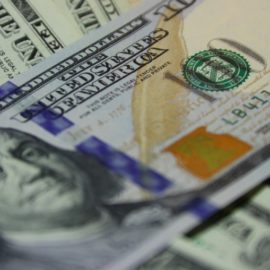

This article is an excerpt from the Shortform book guide to "Win Bigly" by Scott Adams. Shortform has the world's best summaries and analyses of books you should be reading.
Like this article? Sign up for a free trial here .
Have you ever wondered how some people are so good at getting others to do what they want? Do you wish you could wield the same power? What are some persuasion tips that can help?
There are many elements that could contribute to one’s persuasion factor. Some may be out of your control (e.g. personal affinity), but most aren’t. You can significantly level up your persuasion game by just knowing what tactics to use and when to use them.
In this article, we’ll take a look at some high-level persuasion tips by Scott Adams.
Scott Adams: How to Be More Persuasive
Persuasion is a very nuanced communication skill. More accurately, it’s a set of skills that combine together. The more you can combine, the more persuasive you will be. Like any multi-faceted skill, it takes a lot of time and practice to get good at it. But where do you even begin?
The following persuasion tips by Scott Adams will set you onto a good start.
1. Display Confidence and Energy
Display confidence to improve your persuasiveness. You have to believe yourself to get anyone else to believe. Energy is contagious.
People perceive high energy as competence and leadership.
Confidence works in signaling status and quality.
- An implicit assumption is that people who are generally confident without substance will have been called out and had their reputation damaged. Therefore, someone who is perpetually confident must have some real substance and quality behind her.
- People with status have the freedom to act however they like, including like assholes. People without status need to grovel and be excessively nice to get what they want.
- This causes the perception that assholes are more likely to be of high status. Thus causing the misperception that girls prefer to date assholes, when it is something else associated with assholes – money, social standing, confidence – that is the actual attractive thing
- The dating tactic of “negging” tries to signal quality through being slightly rude.
2. Be the Voice of Certainty in Times of Uncertainty
In mass confusion, people gravitate to the strongest, most confident voice.
Offer clarity and simple answers, even if the answers are wrong or incomplete.
Use Occam’s Razor to your advantage. Simple explanations look more credible than complicated ones with lots of variables and assumptions.
- While this might not be factually, scientifically true, it does appear to many to be the right explanation especially in times of uncertainty.
- Often, two things rising together look like they cause one another, rather than being merely correlated.
- Example: Illegal immigrants seem to be taking American jobs.
3. Pacing and Leading
Pacing means matching the person you’re persuading in as many ways as possible – how she thinks, speaks, breathes, moves, sits. People see you as the same as them and get comfortable with you.
Then you can lead, and the subject will be comfortable following.
- Trump matched the complexity of speech of his voters – simple words, simple sentences. This made him easier to relate to.
- Scott Adams introduces himself as an ultraliberal who is pro-choice, pro-marijuana, reparations for African-Americans for slavery. This gets liberal readers on his side instead of rejecting his opinion totally.
Explicitly point out your audience’s state of mind to build a bond with them.
- “By now you’re wondering…”
- “If you’re like most people, you’ll be thinking…”
- If the person doesn’t have this in mind at the time, no harm is done. But if she does, then you gain credibility for reading her mind.
Leave enough blank space in your argument for the person to identify with.
- In Scott Adams’s comic, Dilbert has no last name so you can identify with him as an everyman professional.
- Trump’s insistence on a big wall left many people to fill in their own blanks for how the wall should work. This made people attach to it more than if he had itemized the specifications of a wall.
4. The Fake Because
People may have already made their decisions but are afraid to publicly endorse it. Give them an excuse to agree with you. As Dale Carnegie says, appeal to their higher motives.
- In the election, people claimed to be able to switch sides because of some gross action the other did. Trump supporters may have been afraid to endorse Trump because of the fear of bullying, but Clinton’s email scandals gave them the “fake because” to say that was the last straw.
- (Shortform example: an employee might be threatening to leave for another company. You give them a better offer, while also pointing out their importance and how their team would suffer if they left. The employee may stay primarily for the money, but they also now have a nobler reason to express publicly.)
5. Get People Talking
Use recency/availability bias to your advantage. If people talk about you or your ideas, then they will seem higher priority than otherwise. Move people’s energy to the topics that help you.
- Similar: “no press is bad press.”
Consider being directionally accurate, but with some exaggeration or factual error that will attract criticism. People will spend hours talking about how wrong it is, repeating it in their minds so much that the ideas have large mental impact.
- Trump’s calling his plan “the wall” invited plenty of skepticism about its cost, feasibility, construction materials, and Trump’s intelligence. He could have backed down and said, “of course we know it’s not going to be a brick wall all the way through.” But he didn’t want to silence his critics – talking about the wall anchored Trump as the most important person in the conversation, and made border control a top issue in the public’s mind.
- Doing this is a dangerous strategy unless you have a thick skin, risk tolerance, and moral flexibility.
Surprise the brain to form memories.
- Consider introducing typos in your writing to grab the audience’s attention. This is why Scott Adams titled his book “Win Bigly.”
6. Brand by Association
By associating with an image or idea, some of the goodness or the badness rubs off on you.
- Celebrity endorsements, reasoning by analogy, and using symbols like the American flag all employ this.
- Decorating your living space to be emotionally pleasing will make you happy just as you walk into it.
- If you tell too many bathroom jokes, your friends may start subconsciously associating you with excrement.
- If you talk endlessly about your health problems, you may be associated strongly with your disease, which is a bummer for most people.
Instead, fill people’s heads with positive thoughts and they will associate those good feelings with you.
- When meeting, don’t complain about the weather or traffic. Be positive and talk about what’s exciting in your life or theirs.
- People associate positive memories with dogs – so having a dog with you when you meet someone allows transference of some of that positivity over to you.
Hook your bandwagon to another brand.
- Trump attached himself to the Reagan mythology.
- Scott Adams introduced his “98% Trump win” prediction to mirror Nate Silver’s 2% prediction. This established Adams’s credibility when he was just a cartoonist writing about politics. Just being in the same sentence as Nate Silver established credibility.
- (Shortform example: many startups explain by analogy – “the Uber of dog walking.”)
Prime people with images representing what you want them to believe.
- Exposing people to stories of generosity make them more generous.
- In priming experiments, holding ballot votes in a school environment made voters more amenable to policies favoring school funding.
Avoid negative associations.
- To stand apart, Carly Fiorina described a video of an abortion that went wrong, to capture the anti-abortion base. This press sounded good on paper since it led to discussion. But she associated her brand with a dead baby. People don’t want to think about dead babies one second longer than they need to.
7. Set the Expectation of Being Persuaded
People are more easily persuaded if they expect to be persuaded.
- In his book, Scott Adams repeats that he’s a trained hypnotist. This sounds amazing, almost intimidating, until you realize there is no formal certification for this and makes him sound more credible than perhaps it deserves.
- Doctors post their degrees on their walls. Salespeople drive fancy cars to show they’re good at their jobs.
- Trump wrote Art of the Deal and convinced the world he was a great negotiator. Now every person going in had subconscious permission to do worse against Trump as a persuader. Brilliantly, the book is not just about persuasion – it is persuasion.
- It’s easier to persuade someone who is paying you for a service, since they perceive a higher value to your skills. They want and expect to be influenced.
Tactics
- Brand yourself as a winner. If people expect you to win, they will be biased toward making it happen.
- Improve your physical appearance. Dress for the part. Attractive people are more persuasive.
- Broadcast your credentials in a way that is natural but not braggy. Show a track record of success in whatever you plan to do.
- Meet in the most impressive space you can control. Broadcast power, talent, success.
- Set expectations ahead of time.

———End of Preview———
Like what you just read? Read the rest of the world's best book summary and analysis of Scott Adams's "Win Bigly" at Shortform .
Here's what you'll find in our full Win Bigly summary :
- The persuasion tactics Donald Trump used throughout the 2016 presidential campaign
- Why Hillary Clinton's campaign fell short
- How to leverage people’s biases and irrationality to persuade on your point of view






